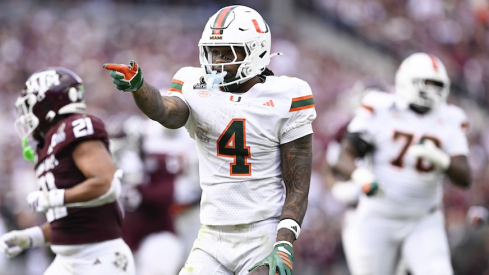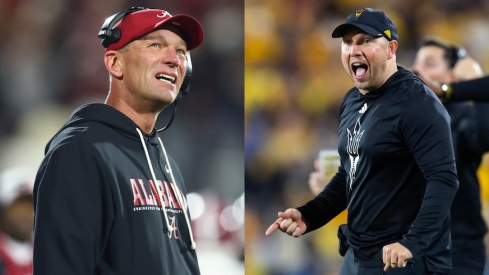 How many do you need?
How many do you need?Earlier this year I discussed installing an offense and how many plays a team needs. Today I want to tackle how many formations and personnel groupings an offense needs. Just as with plays, every additional formation necessitates additional practice time. Therefore, the gain from being able to present multiple looks and personnel groupings must be weighed against the incremental loss of perfecting any one look. Further, the more formations an offense runs means that the offenses run any one formation less and thus increases tendencies by formation. In recent years offensive coaches have identified these downsides and began paring down their pre-snap looks.
The Increased Emphasis on Being Multiple
In his 1969 'Hotline to Victory,' Woody Hayes made clear that he preferred using only one base formation. To him, this provided a pre-snap constraint upon the defense by preventing opposing teams from being able to spot tendencies by formation.
Offensive coaches have generally moved in the other direction in the decades sense, however. This is driven by the evolution of the modern pro-style passing game. In previous decades, offensive football was series driven. An offense would be a "wing-T" or a "wishbone" team, and the entire offense would be built upon the same initial action. Formation diversity only distracted from the tightly orchestrated faking.
Pro-style offenses do not have the same type of series football. Instead, the offense may contain mini-series--a run and play-action pass--but the offense is disparate parts. Having different formations allows an offense to exploit different plays. Relatedly, the increase emphasis on the passing game provides offenses an advantage in being multiple. A team may want to be 'pro-style' on first and second down (2 WR, 2 RB, 1 TE), but then go to three or four wide receivers in passing situations. A pro-style offense gains utility from multiple looks as its the only opportunity for the offense to both be balanced and throw the football.
Less is More?
In recent years, however, we have seen a growing recognition that, just as with plays, less may be more with formations. This is driven by several trends.
One is the success of the Airraid coaches. Airraid teams assign every wide receiver to a specific position and a specific side of the field, which vastly increases the repetitions that individual can receive. In other words, coaches like Dana Holgorsen believe that any utility that is gained by being multiple is outweighed by allowing players to get very good at a few things. The necessary result is that you must have less formations and personnel looks. This is fine for airraid teams because, unlike a pro-style approach, they are not particularly interested in running the football except as a constraint against a team that does not respect the run.
The second trend is the increased use of no-huddle. The no-huddle necessarily limits substitutions, which limits different personnel and formation groups. No-huddle coaches have found a way to split the difference. Often, they will base from a formation look shown above with a flex Y, but use versatile players, particularly at the Y (TE) and F (slot) position, that can quickly move between the backfield to split out. Such a team can give slight formation varations from this base look without major changes.
This approach is precisely the one adopted by Urban Meyer and Tom Herman. Ohio State largely bases from this basic '11' personnel (3 WR, 1 TE, 1 RB) shotgun look with the H-back adjacent to the offensive tackle, but can use 'pivot' players to increase the offense's options, with a 'Y' that can move into the backfield to block or split out wide, or an 'F' that can come in motion in the backfield for an option pitch. Like 'series' offenses, the QB as a run threat and use of option allows a spread no-huddle team to run more series football and necessitates less formation groupings. A spread team can run the football better from such a look than a pro-style team, eliminating some of the need for multiple looks. Further, for the same reasons Hayes identified, this no-huddle approach provides a pre-snap constraint to the defense by forcing a defense to match an offense's base personnel and limits tendencies, but does provide some versatility through personnel. It also creates the added benefit of using the available practice time to get better at less things. Thus look for Ohio State--and other offenses more generally--to trade multiple looks for no-huddle speed and the constraint it applies to the defense.

